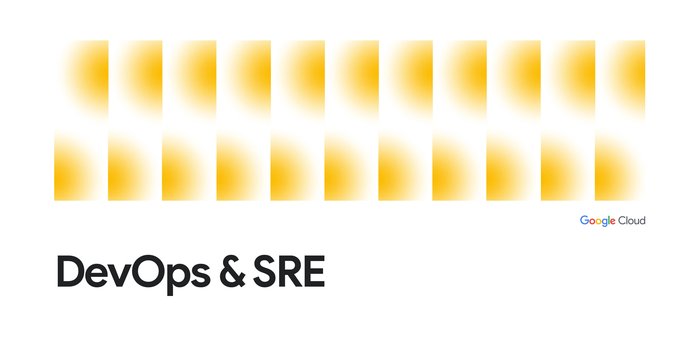How DORA DevOps best practices helped Circles launch a telco-as-a-service in under two months
Kannan Solaiappan
Head of Reliability & Data Engineering, Circles
Circles is one of the fastest-growing technology companies in Singapore and is transforming the telecommunications industry. Launched in 2014, Circles now operates across 14 markets and serves millions of customers globally.
Through our digital expertise gained from operating our own digital lifestyle telco brand, Circles.Life, we identified building the world’s first cloud-native telco-as-a-service platform as the next phase of our journey. Built for operators by operators, Circles X offers a suite of software solutions to clients aiming to launch a digital telco or expand into new markets. We launched Circles X in 2019 as a cloud-native SaaS technology platform to collaborate with telco partners and scale globally quickly and efficiently.
First launched on Circles X’s platform, we partnered with one of Indonesia’s leading mobile network operators (MNO) to launch a digital telco brand in 2020. Built natively on Google Cloud, a distributed team from India, Sri Lanka, Singapore and Indonesia brought the platform live in less than 60 days — under a third of our six-month target — even amidst the complications of the COVID-19 crisis.
To do this, we built the Circles X platform using DevOps Research and Assessment (DORA) metrics endorsed by Google Cloud. Tracking these metrics underpins the performance of our software development team, and has proved instrumental to the success of our mission. The metrics include:
- Deployment Frequency: How often an organization successfully releases to production
- Lead Time for Changes: The amount of time it takes a commit to get into production
- Change Failure Rate: The percentage of deployments causing a failure in production
- Time to Restore Service: How long it takes an organization to recover from a failure in production
We decided early on to use DORA standards as a guidepost for building our solution to give us the methodologies we needed for success, and the Google Cloud team helped us every step of the way in achieving optimal outcomes following the DORA methodology. Our development team was and continues to be focused on ensuring they meet high or elite performance benchmarks for each of the DORA metrics, resulting in the nimble and timely development of our platform.
Here is a step-by-step account of how we built a world-class DORA culture throughout our organization, building upon the site reliability (SRE) practices that we absorbed from Google Cloud training and guidance protocols.
- Working with the Google Cloud team, we set up a full-stack SRE team including a Developer Solution Architect and leaders in Quality Assurance, Security, SRE DevOps and Digital Data Storage.
- We adhered to domain-driven design, an optimal software design approach, that we combined with SRE best practices for DORA excellence. This gave the teams the freedom to independently build services and deliver applications without legacy dependencies.
- Lastly, we extended the structure not just by team, but also services and infrastructure, to be isolated for each domain. All of our DORA metrics and dashboards for internal developer experience are based on domain-driven best practices.
Adhering to DORA benchmarks, the team can roll out products and updates weekly — 75% faster than a traditional telecom operator. This year, we expect even faster deployments as we deepen our DORA expertise. Crucially, Google Cloud provided us exceptional support whenever we faced hurdles building our DORA-enabled platform strategy, whether it was technical, organizational, or cultural.
We benefited from open conversations with Google Cloud, as the team was always ready to share its feedback, comments and viewpoints. Google Cloud also helped us connect with different industry experts for key insights into architecting our solution and creating the right DORA culture.
With Google Cloud team support and focus on DORA metrics, we proved that the Circles X platform could build successful, profitable, agile, and scalable digital brands. Building on these foundations, we’re industrializing the Circles X platform to partner with a global pipeline of MNOs and help the telecom industry build brands and experiences that delight digitally-savvy customers.
In the two years since it launched, Indonesia’s digital brand has grown into one of the most popular and fastest-growing digital telcos in Indonesia. Our DORA learnings have been essential for our future plans of telco empowerment around the world. Moreover, Google Cloud gave us the world-class continuous integration and continuous delivery (CI/CD) we need to build a reliable software development and testing practice that would allow us to launch within six months, from early iterations gradually up to our current version of the digital telco brand.
This was made possible with the infrastructure-as-code approach enabled by Google Kubernetes Engine (GKE), and other key managed services such as Cloud SQL, DataProc, Filestore, Cloud CDN, Pub/Sub and Cloud Storage. Building Indonesia’s favorite digital brand on GKE saved significantly on costs, eliminated dependencies and improved developer efficiency and deployment frequency to go to market. As a result, we are the first telco in Indonesia to have an on-demand developer environment in production, where we can spin up a GKE environment within just a few minutes. This has brought us competitive advantage, increasing developer productivity by 40% and reducing deployment frequency to days from weeks.
Building on the success of the digital brand in Indonesia, we are partnering with Google Cloud to transform our Circles X platform into a robust, flexible solution that enables rapid global launch and expansion for our partner MNOs.



